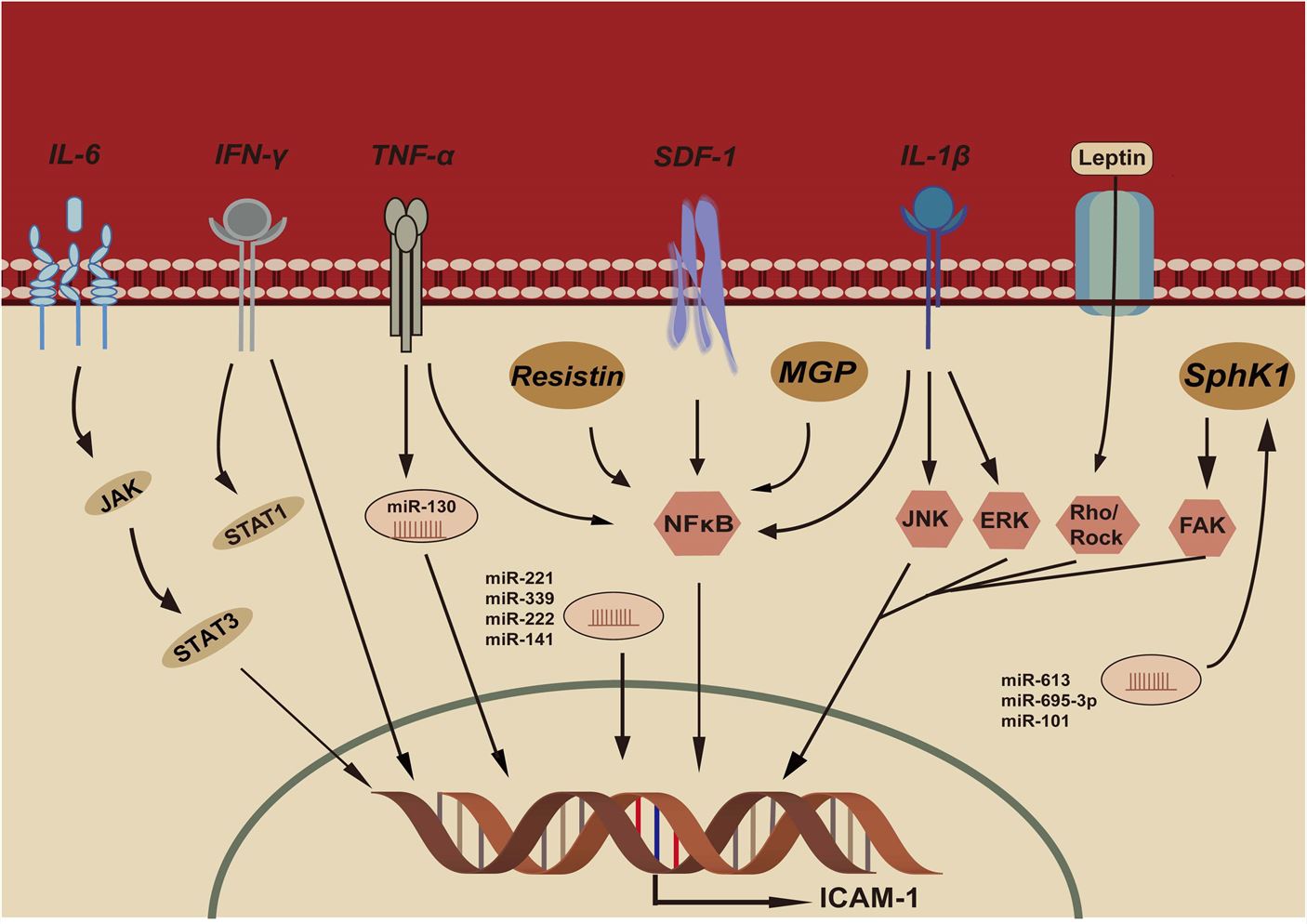Creative Biolabs is an undisputed leading provider of antibody development and generation services. Now, we provide in vitro diagnostic (IVD) antibody development services targeting various biomarkers of a wide variety of diseases. Especially, Creative Biolabs offers high-quality antibody development services for diagnostic applications targeting the CD54 biomarker.
Intracellular Adhesion Molecule 1 (ICAM-1)
Intercellular Adhesion Molecule 1 (ICAM-1), also known as cluster of differentiation 54 (CD54), is a cell surface glycoprotein encoded by the ICAM-1 gene in humans. It is a type of intercellular adhesion molecule and continuously expressed at low levels in the membranes of leukocytes and endothelial cells. And the concentrations of ICAM-1 greatly increase upon cytokine stimulation. ICAM-1 belongs to the immunoglobulin superfamily, which includes antibodies and T-cell receptors. ICAM-1 is identified as a transmembrane protein consisting of a single transmembrane domain, an amino-terminus extracellular domain, and a carboxy-terminus cytoplasmic domain. It binds to CD11b/CD18, or integrins (LFA-1) of type CD11a/CD18, and is also utilized by rhinovirus as a receptor. ICAM-1 can be induced by tumor necrosis factor (TNF) and interleukin-1 (IL-1) and is expressed by the vascular endothelium, lymphocytes, and macrophages. Upon activation, leukocytes bind to endothelial cells by ICAM-1/LFA-1 complex and then transmigrate into tissues.
 Fig.1 ICAM-1 signaling pathway.1
Fig.1 ICAM-1 signaling pathway.1
ICAM-1 Marker of Sepsis
ICAM-1 is supposed to contribute to polymorphonuclear leukocytes (PMNL) recruitment and also involved in secondary organ damage in response to infection and inflammation. ICAM-1 plays a pivotal role in the transmigration of polymorphonuclear neutrophils (PMN) in sepsis. What's more, the transmigration rate of leukocytes from the blood through endothelial adhesion molecules in tissues correlates with the severity of multi-organ failure. ICAM-1 is shown to be continuously expressed on the endothelium at low concentrations. However, during infection and inflammation, expression of ICAM-1 is greatly raised within 6-8 h of the initial insult. Particularly, it has been reported that the significant up-regulation during sepsis and LPS stimulation leads to an elevated PMNL-endothelial cell adhesion. It has also been suggested that the cell-bound ICAM-1 can be released from the surface and become soluble, which terms "shedding". And therefore, increased levels of soluble ICAM-1 (sICAM-1) in plasma show activation of systemic endothelial cells. It seems that sICAM-1 levels are related to the severity of sepsis.
ICAM-1 Marker of Coronary Heart Disease
Coronary heart disease (CHD) is a type of heart disease caused by atherosclerotic lesions of coronary arteries causing stenosis or obstruction of the blood vessel, resulting in myocardial ischemia, hypoxia or necrosis. CHD is divided into five categories: asymptomatic myocardial ischemia (occult coronary heart disease), angina pectoris, myocardial infarction, ischemic heart failure (ischemic heart disease), and sudden death. Recent studies have shown that an inflammatory reaction is an essential component in the appearance and development of the atherosclerotic lesion and the expression of ICAM-1 can be associated with the inflammatory process. In this case, a large number of studies have indicated that there is a significant association between the concentration of ICAM-1 and the risk of myocardial infarction. Moreover, this association seems to increase with the length of follow-up. As an effective biomarker, the measurement of ICAM-1 concentration would be a benefit for the diagnosis and treatment of cardiovascular disease.
IVD Antibody Development Services for ICAM-1 Marker
ICAM-1 has proved to play a vital role in the pathophysiological events resulting in adverse outcome after polymicrobial sepsis. Through our role as a leading antibody service provider, Creative Biolabs is well-positioned to help our clients with the development of high-quality anti-ICAM-1 antibodies. Besides, we also offer diagnostic immunoassay development services, covering feasibility analysis, assay design, assay protocol establishment, assay optimization, and kit production. If you are interested in our IVD antibody discovery services, please contact us for more details.
Reference
- Qiu, Zhiyuan, et al. "Roles of intercellular cell adhesion molecule-1 (ICAM-1) in colorectal cancer: expression, functions, prognosis, tumorigenesis, polymorphisms and therapeutic implications." Frontiers in Oncology 12 (2022): 1052672. Distributed under Open Access license CC BY 4.0, without modification.
For Research Use Only.

